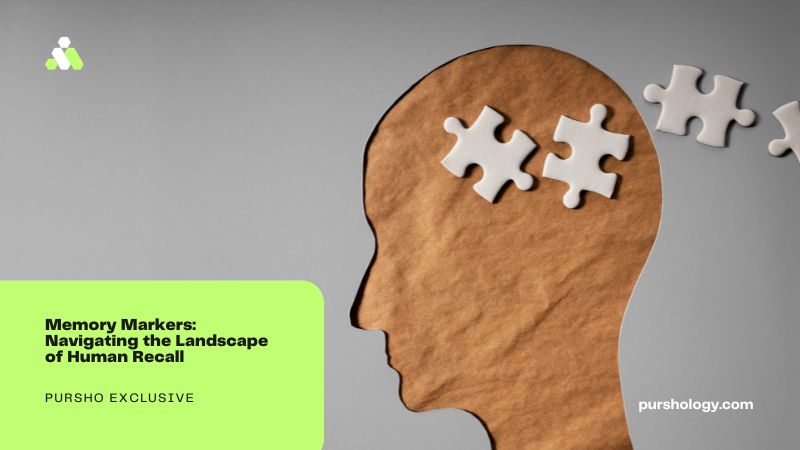Memory markers play a crucial role in shaping the way we perceive, store, and retrieve information throughout our lives. These markers serve as signposts in the vast landscape of our memories, helping us navigate the complex terrain of our past experiences. Whether it’s the scent of a familiar perfume, the taste of a childhood treat, or the sight of a significant landmark, memory markers trigger a cascade of recollections, emotions, and associations.
Understanding Memory Markers
Definition and Types:
Memory markers, also known as mnemonic cues or triggers, are stimuli that activate specific memories or enhance the recollection of certain events. These markers can be categorized into various types, including sensory, emotional, contextual, and symbolic markers. Sensory markers involve the five senses—sight, sound, smell, taste, and touch—while emotional markers are tied to the feelings associated with a particular memory. Contextual markers relate to the setting or environment in which an event occurred, and symbolic markers are often objects or symbols linked to a memory.
Neuroscience of Memory:
The formation and retrieval of memories involve complex neural processes. Memory markers are thought to be connected to the concept of encoding specificity, which suggests that memories are more easily retrieved when the conditions during encoding match those during retrieval. The brain creates associations between the marker and the memory, making it easier to recall information when exposed to similar stimuli.
Role of Memory Markers in Daily Life
Everyday Examples:
Memory markers are ubiquitous in our daily lives. Consider the smell of fresh-baked cookies triggering memories of baking with a loved one, or a particular song transporting you back to a significant moment in your past. These markers serve as windows to our personal history, allowing us to relive and cherish moments that might otherwise fade away.
In Learning and Education:
Memory markers play a crucial role in the process of learning and education. Teachers often use various techniques to create memorable experiences for students, such as hands-on activities, field trips, or visual aids. These experiences act as memory markers, making it easier for students to recall information when needed.
The Psychology of Memory Markers
Association and Linking:
Memory markers work by creating strong associations between the marker and the memory. This linking process involves the brain forming connections between different elements, reinforcing the neural pathways associated with a particular recollection. The more vivid and multisensory the marker, the stronger the memory association tends to be.
Emotional Impact:
Emotions play a significant role in memory formation, and memory markers are often deeply intertwined with our emotional experiences. Positive or negative emotions associated with an event can become powerful markers, influencing how we remember and recall specific moments in our lives.
External Factors Influencing Memory Markers
Cultural and Societal Influence:
Cultural and societal factors can shape the way memory markers are perceived and utilized. Certain symbols or rituals may act as collective memory markers for a group of people, reinforcing a shared cultural identity and history.
Technological Advances:
Advancements in technology have introduced new types of memory markers. For example, digital photos and videos serve as visual markers, while ringtones or notification sounds can trigger memories associated with communication and social interactions.
Elevate your brand’s online presence with Digital Success! We improve your marketing strategy by creating and promoting original content with high added value. We also offer you our best AI tools to boost your sales and increase your productivity. Discover our new tool Talking Human Avatars to tell your message in a video on your website and boost your sales!
Memory Disorders and Memory Markers
Impact on Disorders:
Memory markers also play a role in understanding and managing memory disorders. Individuals with conditions like Alzheimer’s disease may respond positively to familiar markers, providing a link to their past and improving their overall well-being.
Enhancing Memory through Memory Markers
Memory Techniques:
Various memory techniques leverage the concept of memory markers to enhance recall. The method of loci, for instance, involves associating information with specific locations in a familiar environment, creating a mental map that serves as a marker for retrieving information.
Mindfulness and Presence:
Being present and fully engaged in the current moment can also create powerful memory markers. By actively paying attention to our surroundings, emotions, and experiences, we increase the likelihood of forming strong memory associations.
Conclusion
In conclusion, memory markers are intricate components of the tapestry of human memory. They provide a means of navigating the vast expanse of our experiences, creating connections between the present and the past. Understanding the role of memory markers not only sheds light on the complex mechanisms of memory but also opens avenues for improving memory recall, enhancing learning, and supporting individuals with memory-related disorders. As we continue to explore the depths of cognitive science, the significance of memory markers in shaping our personal narratives becomes increasingly evident.







